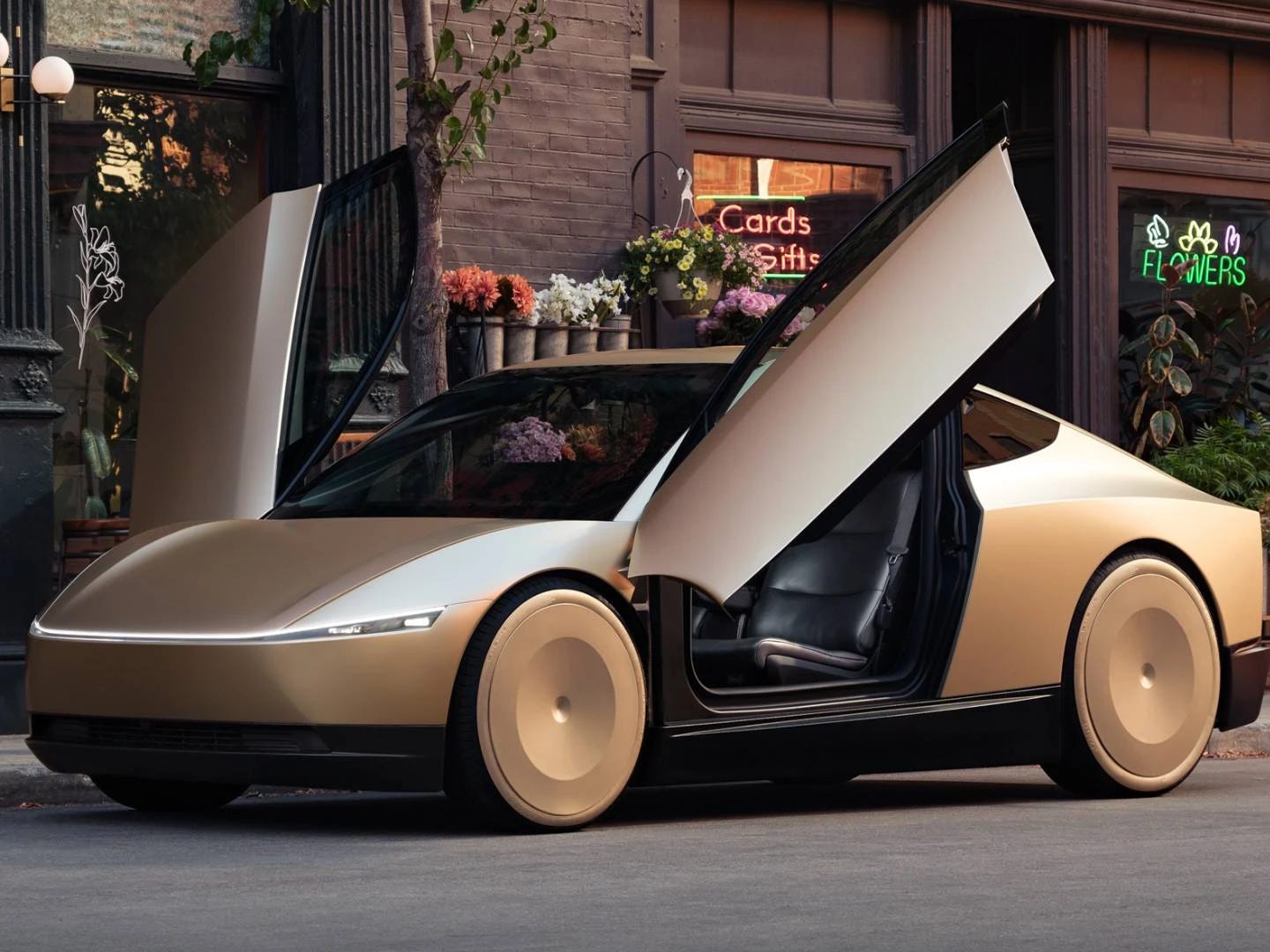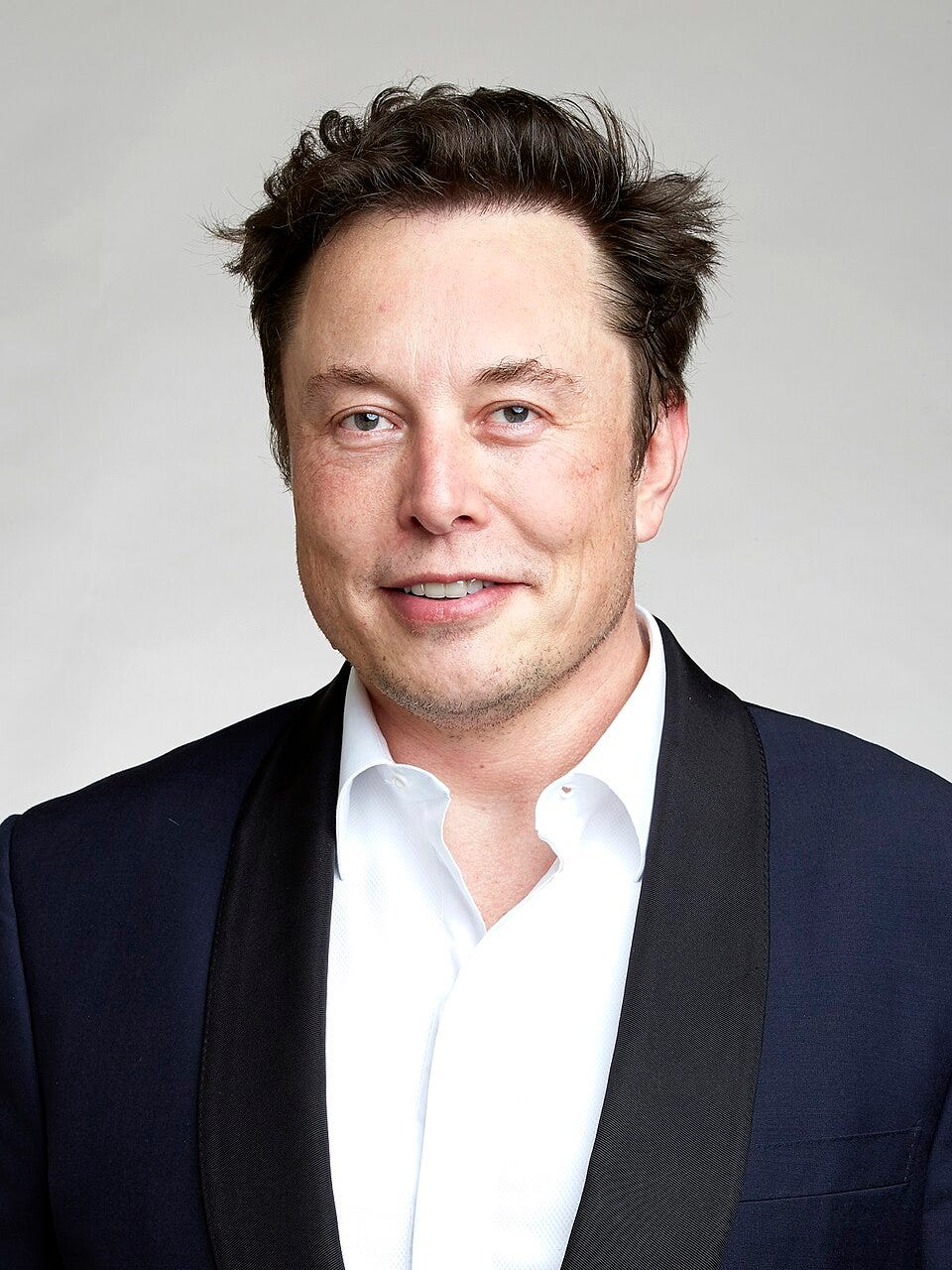Today’s a milestone day.
For the first time since we started this Substack, I sold a stock in my portfolio.
Okay, technically it’s the second—Smartphoto was the first, but that felt more like cleaning up a formality. They’re 99% certain to be delisted, and I didn’t feel like sitting around twiddling my thumbs waiting for the final paperwork. Opportunity costs and all that.
But today’s piece is really about Tesla.
I bought Tesla sometime between March and May last year. And I sold it about two weeks ago.
This isn’t just a post about a company. It’s also a reflection of how I’ve changed as an investor in just 12 months—and how, somewhat unexpectedly, this very Substack played a role in that transformation.
Before we dive in: we’ve hit 500 subscribers!
A quick but heartfelt detour—because we’re genuinely proud of this. Thanks to your enthusiasm, we’re now taking the next step: we’re launching paid content.
Think:
✅ Deep-dive reports on quality companies
✅ Valuation methods you won’t find elsewhere
✅ Extra editions and secret formats we’re still scheming up
We’ll share more soon, but early supporters like you can already pledge at a steep discount. Want in early?
Why I Bought Tesla (in 2024)
Let’s rewind to early 2024.
Tesla stock was down about 40% from its recent highs. Not exactly a glowing setup. Sentiment was sour. Chinese competitors like BYD were finally catching up—offering EVs that could match Tesla on price and quality. At the same time, the auto cycle had turned. Demand was softening. Price cuts were becoming the norm just to keep cars moving.
The market didn’t like it. Cue the selloff.
But what pushed me to take a closer look was something a bit geekier: a post by Professor Aswath Damodaran.
He had just valued all the Magnificent Seven companies. And Tesla? He put fair value at around $180/share—roughly where it was trading at the time. That piqued my interest.
Because I’d always been aware of Tesla’s presence. In Europe, it’s still the most common EV on the road. And Elon Musk, despite all the chaos, had a track record of pulling off things others wouldn’t even dare try.
That was enough for me to dig in. I went down the rabbit hole—watched the Investor Days, read annual reports, followed earnings calls. I got pulled into the vision.
And if you’ve read Harari’s Homo Deus or 21 Lessons for the 21st Century, you’ll understand why. He sketches a future of AI, automation, and humans outsourcing their most tedious tasks to machines.
That future? Tesla’s been selling it for years.
• Robotaxis driving themselves through urban grids
• Optimus bots doing factory work and maybe one day folding your laundry
• Energy storage to help electrify and decarbonize the grid
All led by the guy who helped launch PayPal and SpaceX—and played a role in the early days of OpenAI. Someone who’s been doubted at every step and still, somehow, keeps delivering.
And with the stock back near $150, it felt like the stars had aligned. Solid story. Optionality. Massive market potential. Attractive entry price.
So yeah, I bought.
Why I Sold (in 2025)
Now, onto the more interesting bit: why I sold.
Let me start by saying what didn’t scare me off.
It wasn’t the declining margins.
It wasn’t the drop in vehicle deliveries.
Here’s what the numbers looked like:
• Tesla delivered 1.79 million vehicles in 2024—slightly less than 2023. First time they didn’t grow YoY.
• In Jan–Feb 2025, Tesla’s EV sales in the EU and UK were significantly down, even as the overall EV market grew.
• Market share for full-electric vehicles in that region dropped from 20%+ to around 10%.
• Operating margin? Down from 16.8% (2022) → 9.2% (2023) → 7.2% (2024).
Still, I wasn’t panicking. Why?
Because I never bought Tesla for its cars. That was never the thesis.
I bought it because I believed Tesla was a tech company masquerading as an automaker. The real bet was on FSD, energy, and robotics. If you strip that out, I wouldn’t have touched the stock to begin with.
So what changed?
1. Elon Musk
Let’s talk about the obvious one.
Since I bought in, Musk has increasingly politicized his public persona. He’s openly aligned himself with the Republican party in the US. He’s shared—and defended—posts on X that many interpreted as antisemitic (which he denies). In Europe, he’s flirted with nationalist political figures.
This stuff matters. Not just from a “reputation risk” angle—but because Tesla’s core customer base tends to lean progressive, tech-forward, and environmentally conscious. This behavior alienates them.
At the time I bought the stock, I underestimated this risk. Musk’s unpredictability is a risk in and of itself. And as we all know: uncertainty = risk.
Media sentiment in Europe has also soured. Try finding a positive article about Musk in a major outlet—it’s rare. And fair or not, that reputational damage trickles down to Tesla. Even if 70% of the criticism is overblown, that remaining 30% still hurts.
And I don’t see that trend reversing anytime soon.
2. Valuation vs. Reality
Here’s the second reason: opportunity cost.
When I bought in, the stock was around $180. As I’m writing this, it’s trading near $340.
Damodaran’s $180 valuation already baked in major growth assumptions:
• A scaled-up robotaxi business
• Strong growth in energy
• Rebounding auto margins
• Long-term revenue targets nearing $700B by 2033
For the current price to make sense, you have to believe Tesla will not only meet those lofty goals—but exceed them. Which, looking at the numbers, seems increasingly unlikely.
Especially because—between then and now—we haven’t seen any breakthroughs in FSD. No commercial progress with Optimus. Financials have deteriorated, not improved.
So why the price jump?
Sentiment. Hype. Momentum.
And that’s where I started feeling the itch to sell. Because I realized: I don’t want to own a stock that moves 10% based on a Musk rumor. I don’t want my capital tied to daily mood swings on X.
Could I swing trade it? Maybe.
But that’s not the strategy I believe in—or have any real edge in executing.
The Bigger Shift: Me (the Investor)
More than anything, this was about how I’ve changed.
When I started investing, I was a “story-first” guy.
I chased companies that felt like they were shaping the future. Numbers were secondary. The vision mattered more than the cash flow.
But over time, that started to feel naïve.
The more I learned—and especially since launching this Substack—the more my thinking evolved.
Sharing ideas publicly forces clarity. When you're just pitching in a bar, maybe 3 people are listening. But here? Hundreds. That raises the bar.
It’s made me more aware of risk. More focused on balance sheets, business models, capital allocation. More critical of narratives that sound great but lack substance.
I used to emphasize the upside.
Now I stress-test the downside first.
These days, I only want top-tier businesses at fair or better valuations. And that’s a high bar. Tesla doesn’t clear it anymore. Not because it has become a bad company, but because my framework has become stricter.
Final Remarks
I didn’t sell Tesla because I’ve lost faith in the vision.
I sold because—right now—the gap between that vision and the business reality feels too wide. The price has surged, but the fundamentals haven’t caught up. And I’m no longer comfortable betting on sentiment alone.
Based on today’s evidence, there’s simply not enough proof that FSD or Optimus will live up to their promise. That could still happen. But at this point, I’m no longer willing to take on that kind of risk for that kind of potential.
Curious to dig into the numbers yourself?
👉 Here’s the post where Damodaran valued Tesla at the start of 2024.
Let us know what you think.
👇 Your Turn:
Would you still hold Tesla at $340?
What would it take for you to sell—or re-enter?
We read every comment.
🔔 Don’t miss next week’s post:
Subscribe now to get it straight in your inbox.
Please note: This article includes a disclaimer regarding investment advice.
Our Recent Posts
Is Amazon Undervalued?
With a slight delay (blame Aris), we've finally arrived at the final — and arguably most exciting — part of our Amazon deep dive:
[FREE] A Guide On Key Financial Metrics
Warren Buffett once said that he — and Charlie Munger — never needed a computer or calculator to analyze an investment. “Too complex,” he quipped, waving off anything that couldn't be understood with simple arithmetic and sound reasoning.









![[FREE] A Guide On Key Financial Metrics](https://substackcdn.com/image/fetch/$s_!ROEx!,w_280,h_280,c_fill,f_auto,q_auto:good,fl_progressive:steep,g_auto/https%3A%2F%2Fsubstack-post-media.s3.amazonaws.com%2Fpublic%2Fimages%2F3683d6c1-9bed-4f30-b7b5-dcc4982f7e20_1024x1024.png)
I’ve always been a bit nervous about Tesla mainly due to the fanatical shareholder base. The cult following meant that the valuations quickly didn’t reflect the fundamentals at all.
I think your reason to sell is very valid. I'd only want to invest money in businesses where leadership is extremely focused on the business, nothing else.